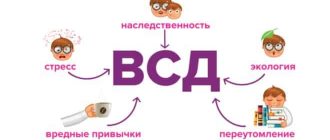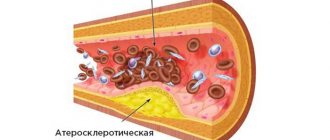Neurotic stuttering is a disorder of the nervous system that affects the fluency and rhythm of the patient’s speech. The pathology is also known as “logoneurosis”.
Stuttering in adults and children can occur against the background of prolonged stress, during or after an emotional shock. Every year, tens of thousands of people with suspicion of logoneurosis turn to speech therapists and neurologists.
Let us consider in more detail what form of stuttering is caused by psychogenic causes and psychotraumas, what precedes the onset of acquired logoneurosis of the neurotic form, and what determines the mechanism of the disease.
What it is?
Neurotic stuttering (or logoneurosis) is one of the forms of speech dysfunction , which is expressed in distortion of the rhythm of conversation, the appearance of speech repetitions and neurotic hesitations.
This disease, like similar stuttering, is formed as a result of tonic and tonic-clonic convulsions in the respiratory-vocal and articulatory muscles.
Logoneurosis is closely related to traumatic events, due to which it belongs to the group of neuroses . However, the disease can also be caused suddenly.
Children are at risk. Mainly during the active formation of speech functions. Short-term speech hesitations are observed in 4 children out of 100.
Clinical forms
Stuttering can occur in a neurosis-like or neurotic form. Moreover, each of them has its own reasons for development.
- Neurosis-like stuttering. This speech defect often occurs as a result of a pronounced mental disorder with loss of control over articulation and motor impairment. A child with this form of stuttering usually lags behind his peers in development. Such abnormalities are detected during MRI.
- Stuttering of a neurotic nature. This form of speech disorder includes social and psychological reasons. Neurotic stuttering cannot be caused by physical disorders in the brain, postpartum or birth injuries. With this form of the disease, a person is easier to cure than with neurosis-like stuttering. This problem is most often dealt with by a psychologist.
People with neurotic stuttering are fearful, touchy, silent and withdrawn. They invent fears for themselves that prevent them from living normally; they are worried and irritated all the time. They have no deviations in physical development.
Causes of the disease
The main reason for the appearance of neurotic hesitations is the influence of a traumatic situation or prolonged distress.
In the case of a one-time destructive psycho-emotional event, the disease may go away after some time; more serious consequences (up to transient mutism) are expressed due to prolonged stay in an environment unfavorable for the psyche.
Is it possible to start stuttering from fear? Examples of psychogenic causes of stuttering in children and adults:
- stress, extreme fear, or extreme anger;
- excessive load when teaching spoken language;
- violation of family roles and family functionality in children;
- imitating the conversation of a stuttering relative or friend;
- loss of a loved one;
- love problems.
Pathogenesis and development mechanisms
The origin and formation of logoneurosis in modern medicine has not yet been sufficiently studied.
Presumably, when exposed to acute stressful situations, neurotic hesitations develop through the appearance of a stable pathology of conditioned reflex functions. And the final consolidation of the disease is the formation of motor automatism.
It can be assumed that at the age of 2 to 4 years, stuttering is influenced by the pathological consolidation of natural speech hesitations , characteristic of this age period of the formation of speech functions (the so-called functional stuttering).
Statistics show that stuttering often begins to appear in the early stages among children aged 3-5 years. Complications of symptoms and accompanying neurotic reactions can be observed mainly among adolescents, in the period 15-17 years.
The complication process is associated with rapid age-related changes in the human body. Logophobia (fear of speech) is formed precisely during puberty , subdepressive mood changes also appear, and various kinds of asthenic and somato-vegetative disorders arise.
You can learn about the causes of clonic and tonic stuttering from this article.
Logoneurosis: treatment
Treatment for stuttering should begin as early as possible, before the symptoms of the disease have time to take hold.
Logoneurosis in children requires complex therapy. Patients who stutter should definitely meet with a child and family psychologist, who will help the parents of a sick child develop a harmonious and correct parenting style, as well as create a comfortable microclimate in the family.
In some cases, folk remedies are used to treat such a disease. There are many ready-made herbal preparations that have a calming effect. These include the following:
- Ordinary oregano (1 large spoon per 220 ml of boiling water, cook in a water bath for ¼ hour, and then leave for about 40 minutes). After straining, take the decoction three times a day, dividing it into 3 servings.
- Rue fragrant (1 dessert spoon of herb per 220 ml of boiling water, keep in a water bath for about 5 minutes). Teens and adults should take 1 large spoon three times daily. For small children, it is enough to gargle with a decoction.
- White ash or dead nettle (1 large spoon of herb is poured into 220 ml of boiling water, wrapped and infused for about half an hour). Take the finished broth, 1 large spoon three times a day. For small children, it is enough to gargle.
5 Healthy Diets From Around the World You Should Follow When it comes to the healthiest diets known to the world, we are faced with an interesting paradox. A rich and prosperous America takes after.
Never do this in church! If you are not sure whether you are behaving correctly in church or not, then you are probably not acting as you should. Here's a list of terrible ones.
Charlie Gard Died A Week Before His First Birthday Charlie Gard, the terminally ill baby the world is talking about, died on July 28, a week before his first birthday.
9 Famous Women Who Have Fallen in Love with Women Showing interest in people other than the opposite sex is not unusual. You are unlikely to be able to surprise or shock anyone if you admit it.
Contrary to all stereotypes: a girl with a rare genetic disorder conquers the fashion world. This girl's name is Melanie Gaydos, and she burst into the fashion world quickly, shocking, inspiring and destroying stupid stereotypes.
Why are some babies born with an "angel's kiss"? Angels, as we all know, are kind to people and their health. If your child has the so-called angel's kiss, then you are out of luck.
Features of the manifestation of the psychological form
The consequences of suffering mental damage can manifest themselves in the form of mutism due to inhibition in the areas of the speech motor analyzer. Mutism is expressed in the patient's refusal to use speech .
The duration of the “silent period” varies depending on the state of the nervous system, as well as the severity of the injury. Inhibition affects parts of the cortex and subcortex of the brain, affecting the brainstem and reticular formation.
Stuttering is only a symptom of various disorders, the list of which predominates: neurosis-like speech disorder syndrome and speech neurosis (logoneurosis).
Other types of pathology may exist within the framework of catatonia, epilepsy, dementia , etc. In such cases, the patient is sent to fight the dominant disease.
There is also stuttering of uncertain origin, which does not fit entirely into the dichotomy of logoneurosis - it is a neurosis-like logosyndrome of a residual-organic type.
After disinhibition, fragments of dissociation of various levels of the central nervous system appear. A sick child has isolated words, the tempo breaks, the fluency of speech changes and stutters appear ; the child stutters when he is excited or nervous.
The influence of a psychologically unfavorable environment for a patient in this state can lead to the consolidation of speech defects and neurotic reactions.
The symptoms of nervous stuttering in children may be accompanied by a fear syndrome, characteristic of childhood neuroses : the sick child begins to strive to avoid speech contacts, and there is a violation of communicative functions.
In the process of growing up, fears and obsessive thoughts are likely to appear; stuttering appears in an adult when excited. Speech disorders may disappear or reappear.
How are the movements of children suffering from neurotic stuttering characterized? Many researchers of this speech pathology express different thoughts regarding the accompanying ritual movements in the patient. Against the background of psychasthenic character accentuation, specific logophobia was diagnosed.
School students reported frequent touching of the forehead (a gesture of intense thought). Working people observed, for example, when communicating with their superiors, shifting from foot to foot, touching the earlobe, patting a certain part of the body.
Treatment
Treatment of stuttering in children is largely psychotherapeutic. If there are no organic brain lesions, there is no need for drug therapy.
Speech therapy classes
Speech therapy treatment frees speech from tension, eliminates pronunciation defects, develops clear articulation, and makes speech smooth and expressive.
Primary treatment is carried out with the support of a speech therapist, then the child will have to practice oral speech independently. To consolidate the effect, the patient is given the opportunity to practice simple communication with other children.
Breathing exercises
Treatment with breathing techniques is aimed at training the strength, freedom and naturalness of the voice. The therapeutic effect extends to the organs of speech and breathing at the same time.
Training the diaphragm has a beneficial effect on the process of voice formation, breathing deepens, vocal cords become more mobile, and close more tightly when pronouncing sounds.
Acupressure
Whether acupressure treatment will be needed depends on the complexity of logoneurosis. The essence of the procedure is to influence certain acupuncture points of the back, face, chest, and legs.
Treatment of stuttering with acupressure massage restores the nervous regulation of speech, the effect is noticeable after the first course of therapy.
Computer programs
There are special neo-methods - computer programs whose task is to synchronize the patient’s auditory and speech centers. By practicing using computer techniques, the child gradually acquires the ability to speak smoothly, without hesitation.
Drugs
Sometimes neutralizers are used that remove the blocking effect of substances that inhibit the normal functions of the centers of the nervous system. If a child cannot overcome nervous tension, soothing herbal decoctions and tinctures are prescribed.
Diagnosis of a sudden form of logoneurosis
Diagnosis of logoneurosis takes place under the supervision of several specialists at once. We will describe in detail the diagnostic scheme: from contacting doctors to making a diagnosis.
How is neurotic stuttering diagnosed?
- Appeal to specialists in the field of speech therapy and neurology.
- Examination of the patient’s speech by a speech therapist, determination of violations of tempo, rhythm, smoothness, presence of errors, repetitions, stretching of sounds and other defects.
- Complete neurological mental health assessment. Including checking the patient's reflexes.
- Prescribing a detailed course of treatment.
Differential diagnosis
Differential diagnosis is used to distinguish neurotic stuttering from neurosis-like stuttering . The latter type of pathology occurs due to traumatic brain injury or multiple abnormalities of the central nervous system.
Basically, neurosis-like stuttering is accompanied by organic personality changes: inertia, irreplaceability of the euphoric state, difficulty switching.
To avoid the organic nature of stuttering, doctors additionally prescribe the following studies: MRI, Echo-EG, EEG, REG or CT scan of the brain.
It is necessary to understand that neurotic stuttering (when a child or adult suddenly, sharply begins to stutter) can be a concomitant disease with certain mental disorders (for example: schizophrenia, mental retardation, psychopathy). In such cases, the patient is prescribed a consultation with a psychiatrist.
In addition, neurotic stuttering should be distinguished from functional stuttering in children.
The latter occurs due to the rapid development of speech at the age of 2-5 years, when the hemispheres of the brain do not have time to mature. It is temporary and goes away on its own; it is not a true logoneurosis.
Degrees of logoneurosis and how to distinguish it from temporary speech problems
However, problems with speech do not always indicate the occurrence of stuttering. Dr. Antonova explained how you can distinguish real stuttering from temporary speech problems.
As it turned out, in preschool children, during the development of speech, speech fluency disturbances occur, but they are associated exclusively with age-related changes. The fact is that children’s repetition of certain sounds or syllables, due to the imperfection of the auditory and speech motor analyzers, are considered normal for the child’s development and pass without medical intervention.
Fluency problems
- The child repeats syllables or words once: something like this.
- Sometimes the child selects a word or tries to follow sounds in speech and then pronounce them in the same way.
- Pauses can be filled with various sounds that characterize the thought process.
Fluency of speech in such cases returns after five years, and the child begins to speak freely.
For comparison, the speech therapist noted that stuttering has several degrees and can be easily distinguished by their characteristic features.
Mild stuttering
- Hesitations in speech are present on a constant basis.
- The child repeats syllables or words more than twice: at-pri-pri-about like this.
- There is strong tension on the face and muscles, which indicates the child’s anxiety and discomfort.
- A so-called stupor may occur - the absence of air or voice for several seconds.
- The voice may also change: it becomes weak, quiet and tight, as if the baby wants to hide it.
Severe degree
- Hesitations in speech are observed constantly and there are quite a lot of them.
- The child speaks with great tension, experiencing discomfort. Certain movements help him relax, which may seem fixated.
- In emotional moments, hesitation and manifestations of other speech defects sharply intensify.
Treatment and correction in children and adults
Is it possible and how to cure stuttering caused by fear? Logoneurosis can be corrected. Before proceeding with treatment, it is necessary to study and eliminate the cause that led to the pathology.
Treatment is carried out through medication and psychotherapy . The time and intensity of the course depends on the complexity of the disease; for the procedures to be effective, all medical instructions must be strictly adhered to.
List of medical procedures to improve the patient's condition:
- relaxing massage – removing the tone of the speech apparatus and improving blood circulation in the body;
- breathing exercises – establishing high-quality breathing;
- wall psychotherapy – psychological overcoming of the speech barrier between the patient and society;
- medications – treatment of serious mental disorders;
- electrosonotherapy – improving blood circulation, reducing pain sensitivity;
- psychological trainings, art therapy and psychoanalysis sessions - socialization of the patient, identification and self-healing of the disease;
- hypnosis – relaxation of the body and finding out the causes of psychotrauma in the patient.
Neurotic (colloquially “nervous”) stuttering in children and adults most often occurs as a result of stress. Adverse psychological factors influence the destruction of a person’s speech. The symptoms of the disease can be either pronounced or indirect with alternating relapses.
Individuals with weak psychological stability are more susceptible to logoneurosis. Most often, the disease is characteristic of early childhood, for example, a child suddenly became frightened and, after experiencing fright, suddenly began to stutter.
Depending on the severity of the disease and treatment conditions, the pathology has favorable and unfavorable outcomes . In the case of a progressive (favorable) situation, the symptoms may disappear completely.
Is it possible to get rid of stuttering as an adult?
Can. But much will depend on him. You need to train your body to react normally to the process of extracting information. Yes, initially the fear is in the head, but even before speaking, the body begins to tighten in various places, and this is already a physiological problem. And, instead of working through these problem areas normally, the stutterer begins to resist himself, trying to force out some “difficult” sound. He tries somehow, crookedly, obliquely, with pressure, but to convey the desired thought, just so as not to stop and fall silent mid-sentence... Sound familiar?
So, for a comprehensive and stable overcoming of stuttering, you need to work with both the psychological component and the physical one. Separately, psychology or speech therapy are powerless here. After psychologists and speech therapists, the stuttering adult becomes more and more discouraged and the feeling of powerlessness intensifies in many situations in which he cannot cope without speech blockages. The process of getting rid of stuttering is not easy. To do this, you need to get rid of both negative thoughts and the body’s reflexes to pinch this or that area before speaking.










